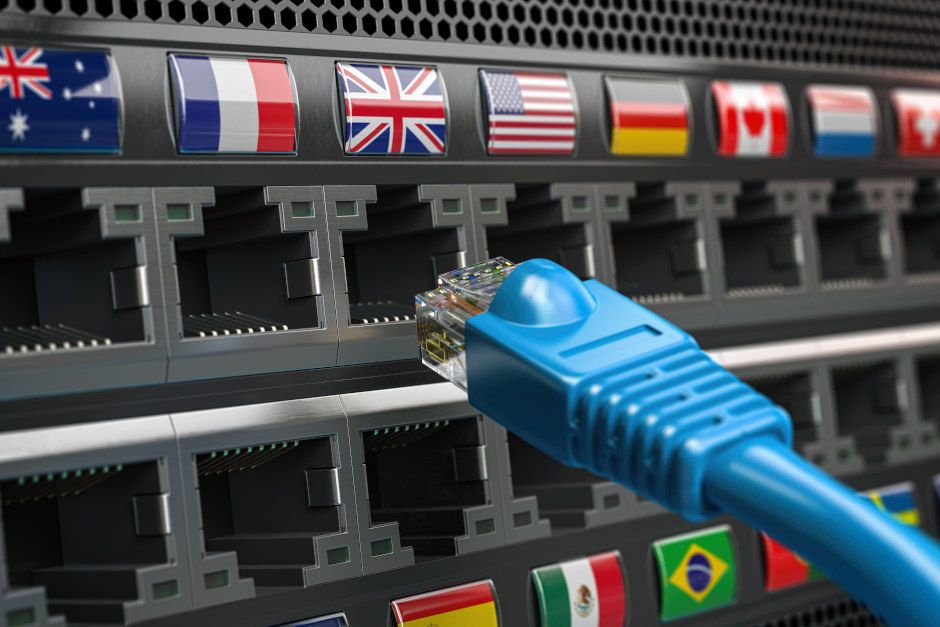SOCKS5 is an Internet Protocol that uses a proxy server to exchange network packets between a network client and an Internet Service. One of the key features of the SOCKS5 protocol is the optional additional authentication that enables only users with the appropriate level of authorization to access the server.

SOCKS5 may come as a separate piece of software, but most often is an additional feature offered by dedicated VPN services. It allows the user to change their location – the process known as “location spoofing” – so that websites and online services “think” the user is located somewhere different while web browsing for example. In that way, the SOCKS5 protocol allows users to hide their Internet Protocol (IP) address while they are online.
Authentication Methods
SOCKS5 uses a number of authentication methods to enhance the security of the individual user. Null authentication is the default enabled feature, which means that the server requires no additional authentication for the app to be installed on the device. The username/password authentication is the most basic type. It requires the user to fill in their login details to use the socks proxy server. The GSS-API is a more sophisticated type, in which both the user and the server use auth protocols on an operating system level to verify the identity of the person using the SOCKS5 proxy.
Since SOCKS5 operates on Layer 5 of the OSI model, it works as an intermediary between the presentation layer and the transportation layer of the networking process. As such, SOCKS5 supports TCP and UDP protocols to further enhance the security of the person using the proxy.
Authentication methods for SOCKS5 proxy servers are crucial for enhancing security and controlling access to http proxy servers. SOCKS5 proxies support various encryption mechanisms, each offering a different level of protection.
- No Authentication: The simplest option, where no authentication is required. While it’s the most straightforward, it’s also the least secure, making it suitable for public proxy servers where access control isn’t a concern.
- Username/Password: This method requires users to provide a username and password in the settings before using the proxy. It’s more secure than no authentication but vulnerable to brute force attacks if weak credentials are used.
- GSSAPI (Generic Security Services Application Programming Interface): Also known as Windows Integrated Authentication or Kerberos, this method provides strong security by leveraging existing auth systems. However, it’s more complex to set up and may not be supported by all clients.
- Challenge-Response: A challenge is issued to the client, which must respond with the correct answer. This method adds an extra layer of security compared to plain username/password authentication.
When choosing an authentication method for SOCKS proxies, it’s essential to balance security requirements with ease of use and compatibility with client applications. Strong methods are recommended for protecting sensitive data and ensuring the integrity of your socks proxy server address.
How Does SOCKS5 Work
Users resort to SOCKS5 proxy when they want to bypass location restrictions on websites and internet services. The protocol reroutes packages of data from the user to the proxy server address and there – to the online service they are trying to access. To do that, SOCKS5 uses arbitrary IP addresses from the Transmission Control Protocol (TCP) and the User Datagram Protocol (UDP).
Let’s say that the user has 10.10.10.1 as their public IP. They don’t send the data packages to the web service they want to use directly, but instead route them to the SOCKS5 proxy server. The proxy changes the public IP to 20.20.20.2 and then redirects the packages and requests to the desired destination. In that way, the service – which can be a website, cloud server, or streaming service, among others – thinks that the request comes from a totally different physical location than it does in reality.
One key difference between a SOCKS5 proxy and a VPN server is that the http proxy doesn’t encrypt the user data. That means that the user’s activity information is still accessible and can be monitored by anyone able to identify and is willing to track the user.
What Are the Benefits of Using SOCKS5 Proxy?
Even though no proxy or VPN server can truly make users anonymous online, they add a considerable layer of security to the network activities of users who resort to them. SOCKS5 proxy services do not have user encryption, but can still come in handy in certain situations.
Getting Around Online Blocks
Let’s say that the user wants to use an online service, such as a streaming platform that blocks certain IP addresses based on geographical location. In that case, a SOCKS5 proxy is the easiest way to get around that block, because it literally changes how the user’s physical geo-location looks from the side of the service. It is important to note that SOCKS5 won’t work when the service uses Deep Packet Inspection (DPI), e.g. the traffic is blocked by the Internet Service Provider directly. Most nation-imposed blocks utilize DPI, and the best way to circumvent them is to use a VPN service.
Getting a More Stable and Faster Connection
SOCKS5 ability to use the UDP protocol gives it an edge over older SOCKS protocols. The UDP ensures a faster and much more reliable connection. The proxy also can catch data and speed it up internally, which will actually make the user’s online experience much faster. If they want to make things even speedier, they can connect to a SOCKS5 proxy server that is located nearer to their actual location.
Getting Better Performance
SOCKS5 proxies do not rewrite the headers on data packets, which used to be a major reason for getting error messages with the old protocols. The edited headers meant that mislabeling and misrouting data was a common occurrence. Fewer errors logically mean a much better and smoother overall socks proxy experience. The trade-off is that the user’s personal data remains written in the data package’s data, which also means that their anonymity is being compromised.
Good for P2P Platforms
Since SOCKS5 transfers smaller data packages, it allows much faster download speeds. It is the reason it is often implemented into peer-to-peer file-sharing websites and platforms.
Setting Up a SOCKS5 Proxy
The first step is to find a SOCKS5 proxy server that you’d like to use. There are many free SOCKS5 server lists available online. Note that it is best to avoid them unless as a last resort because those tend to be typically slower and prone to security breaches.
One of the good things about SOCKS5 is that, even though it often comes as a part of VPN software, you can enable it on your computer with accessible settings without installing additional apps. Here are the steps for manual proxy configuration.
If you are on Windows:
- Go to the Control Panel
- Find the Network and Internet tab and open it
- Go to the Internet Options tab
- Click on Internet Priorities and go to Connections
- Click on the LAN settings button.
- Tick Use a proxy server for your LAN”
- Select “Activate Bypass proxy server for local addresses”
- Click on the Advanced button
- Find the SOCKS field and enter the IP and port for the SOCKS5 proxy you’d like to use
- Make sure that the HTTP, Secure, and FTP fields remain empty
- Click OK and then Apply
This manual proxy setup will apply the SOCKS5 to all internet browsers and online applications you are currently using.
The steps for enabling a SOCKS5 proxy on MacOS are:
- Open System Preferences from the Apple menu and go to System Preferences.
- Click on Advanced
- Select the Proxies tab
- Tick SOCKS Proxy
- Enter the server cluster name
- Set the port to use to 1080
- Tick “Proxy server requires password”
- Type in your login details
- Click OK and then Apply.
Mobile Apple devices such as iPhones and iPads can also utilize SOCKS5 proxies to hide the geolocation of their users. More and more mobile Apple users have started using them.
